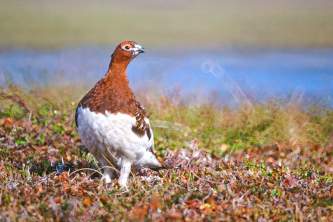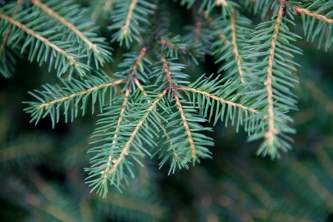Staying at an Alaska Public Use Cabin in Winter
So you’ve rented one of Alaska’s fabulous public use cabins for a night or two during the winter. Whether your destination centers on a frozen lake, or deep in the woods, or perched on an alpine slope — or even close to the road — you will still need to work out the logistics and packing for a successful trip in the face of possible frigid cold or challenging winter precipitation.
How will you travel? What should you carry? How much clothing?
How do you ensure that you and your family are self-sufficient and comfortable overnight (or longer) in a setting where temperatures can plunge below zero or snow might pile knee-high before breakfast?
While it’s all a bit different than a summer excursion, prepping for a winter trip in Alaska is logical and hinges mostly on common sense. You can do this, and do it well, with basic camping gear.
Our Countdown To A Great Winter Public Use Cabin Adventure
1. Pick the right cabin
This is a reach-and-grasp question. Select a cabin that you can heat at a location that you can reach while still having fun. No death marches allowed!
Smaller cabins are easier to keep warm in frigid weather, especially if you must gather or transport your own fuel. That sprawling lakeside cottage with room for eight might require hours of firewood gathering for a stove that must be tended all day and half the night. A cozy hut will warm up faster and stay toasty longer.
And then consider how far you must travel and over what terrain. Some cabins can be reached by hiking, while others might require skiing. Some are a half-mile or less from parking, while others may be 10 or 12 miles out. What are you used to doing? What have you done before?
Trail conditions are another important factor. Many trails leading to Alaska PUCs are shared by recreational snowmobilers once snow cover allows. This symbiotic use in effect creates packed, groomed corridors for non-motorized users. Skiers, hikers, bikers and snowshoers can often travel much faster and with less effort if they can follow a snow-machine route to the vicinity of the cabin.
On the other hand, if you need to break trail or follow a single-track put in by other skiers or walkers, count on an increase in travel time. A good rule of thumb: Non-motorized winter travel can take three to four times longer than summer travel over the same terrain during difficult conditions.
Winter travel can also be much faster under ideal weather and trail conditions, of course. Which leads us to . . .
2. Check forecast and posted trail conditions the day before you depart
This intel will help you fine-tune packing or adjust your travel mode right before departure.
For instance, a forecast of deep snow might suggest you should ski ultra-light with backpacks. A report of icy, friction-less trails and clear weather might suggest you can walk while pulling a big sled loaded with gourmet meals and gas lanterns.
- Use this point-click map updated by the National Weather Service for the general outlook.
- Check on highway surface conditions along your route with Alaska’s Road Weather system. Check the 24-hour extremes nearest to your destination.
- If there’s a trail forum associated with your cabin, scope it out. Check the latest conditions reported by state park rangers. Don’t be shy about calling the agency, federal or state, that manages the cabin, for last minute reports.
3. Keeping warm
Solving this fundamental problem can be fun. A few cabins include propane stoves or oil hook-ups. Follow the posted directions on what to bring and how to operate the device. But most Alaska PUCs contain wood stoves, and you must gather or provide the fuel yourself. Here is our advice:
- If possible, bring your own wood. This is especially easy if you have a walk-up cabin. If you need to travel too far, consider bringing newspapers in a garbage bag for fire starter and/or some dry kindling to get a blaze started. Don’t count on fire starter being in the cabin when you arrive.
- Carry a camp saw. This is essential. Many lightweight models fold up to fit easily inside packs or sleds. Make sure you know how to use it before you go.
- Use dead trees. Living trees don’t burn well. Or at all. Those standing-but-barren birch, alder and willow might look dead, but they’re almost always dormant and green. With a little digging, you can find downed wood that has naturally seasoned. It’s worth the effort.
- Find natural fire starter. Check for masses of dry, dead twigs inside the lower branches near the trunks of spruce trees. If it has no green needles, and snaps when it breaks, it will usually burn well. (Twigs that bend and don’t snap are usually wet or green and won’t burn well.) Papery birch bark from a downed tree will ignite quickly and generate a lot of heat.
- Cut the wood into 8- to 12-inch-long pieces. Easier to load into the stove.
- Consider carrying an ax or splitting maul. Some cabins will have rounds, left behind by rangers or previous users with chainsaws. Split wood burns best of all.
4. Water
Plenty of fresh, pure water is essential during winter camping — as much as one gallon per person per day
- If you can’t bring enough along, you will need to melt snow or dip from streams or lakes.
- Carry a garbage bag and a scoop or a pot. Load the bag with the cleanest snow you can find, then stash it outside the cabin door. Snow out on the lake is often cleaner than snow under trees of all.
- Carry a large pot that will rest on top of the wood stove. Scoop the snow into the pot and let your cabin heater melt your water. Or do it with your cooking stove. Note: snow is mostly air, so you will need to replenish this pot more often than you expect.
- Decant the melted water through a coffee cone with a paper filter or paper towel into your water bottles. This step will remove most of the many specks, birch seeds and dirt that accumulate in the snowpack. (Even the whitest snow has specks!)
- If gathering lake or stream water, purify it before drinking. It may be winter, but pathogens may still be present. Many people use the same purifying process as for summer camping.
5. Food
Winter camping in a cabin often inspires grand, ingenious meals. Here are a few tips:
- Bring a camp stove with enough fuel and the right pots for your menu. Think it through in your home kitchen as you pack.
- Pre-cook meals at home and carry them in gallon freezer bags. These can be reheated by dipping in very hot water or in a pot on the stove. Curry dishes and stew work great! Or carry fresh vegies and chopped meats for stir fry. The colder temps outside can reduce or eliminate the danger of spoilage.
- Carry baggies with back-up snacks, especially for kids. The carbs in energy bars and gorp can quickly stoke the inner fires of your belly if you get cold.
6. A light source
Night stretches long during the heart of Aaska’s winter, with effective darkness at times 18 hours or more. Plus, heavy cloud cover or storms can make the day pretty dark too. So you will need to illuminate things.
- Every person should carry a headlamp or flashlight with fresh batteries, plus an extra set. Essential for visiting the outhouse after dark.
- Carry a camp lantern with extra fuel. A standard two-mantle white gas lantern will typically last all evening and still have enough fuel to shine during breakfast. Bring extra mantles: they often break on the trip in.
- Candles. Convenient, and offer rustic ambience. Bring a paper plate or dish to set them in.
7. The old saying applies: there’s no such thing as cold weather, only cold clothing
- Think layers. Poly-pro-spandex against skin, heavier poly-pro in the middle, fleece for serious insulation, with nylon outer layers to break wind and shed snow. A warm coat (a compressible down jacket is great) will complete the package.
- Use buffs, ear bands and hats. Most of your body heat escapes from the exposed skin of the neck, face and head. A tube-like nylon buff pulled around the face and head can be as effective as putting on an extra coat.
- Leave cotton clothing at home or reserve it for lounging inside the cabin. Damp cotton clothing is chilly and uncomfortable. Wet cotton clothing can be dangerous when out traveling cross country in the cold.
- Bring extra socks. Fresh, dry socks may be a high mark of civilization. A tip: Stash the day’s damp socks inside the sleeping bag when you go to bed. They will dry out overnight.
- Mittens and liner gloves trump gloves alone. They’re warmer! Including chemical warmers for hands and toes is a great back-up.
8. Emergency preparedness
You may be hours from help. So you want to be able to handle simple gear repairs and basic first aid.
- Bring a fully charged cell phone kept off and warm in a pocket next to your torso. Many cabins or high spots in the vicinity will have service.
- You don’t need an expensive first aid kit to deal with minor camping cuts or burns. Put a roll of gauze, a roll of first aid tape, bandage strips and a tube of antibiotic ointment into a quart plastic freezer bag. A baggie of over-the-counter pain or anti-inflammatory pills may help ease travel aches.
- Repair kit: a sewing needle with thread or floss, wire ties, a bit of bailing wire and a roll of duct tape can temporarily solve most gear mishaps. A multi-tool is a great help.
10. Entertainment
Because you will likely be inside that cabin for many hours.
- A board game or two. Scrabble can be epic under a gas lantern.
- Deck of playing cards. Goes without saying . . .
- A book to read. There’s nothing like a good novel while the wood stoves ticks and the wind howls outside.
- A portable FM/Am radio. Many locations receive good coverage from local stations. A NOAA weather band can get you the latest forecast.
Final Reminders:
- Matches and lighters. You won’t be igniting winter fires without them.
- Extra toilet paper. Cabins can run out.
- Fuel, stove, light source, pots and utensils, water bottles.
- System to make and purify water.
- Sleeping bag and pad. You can usually get away with a bag rated to the 30s.
- The right clothing. With extra socks.
- Prescription glasses and necessary medications.
-
The food!




